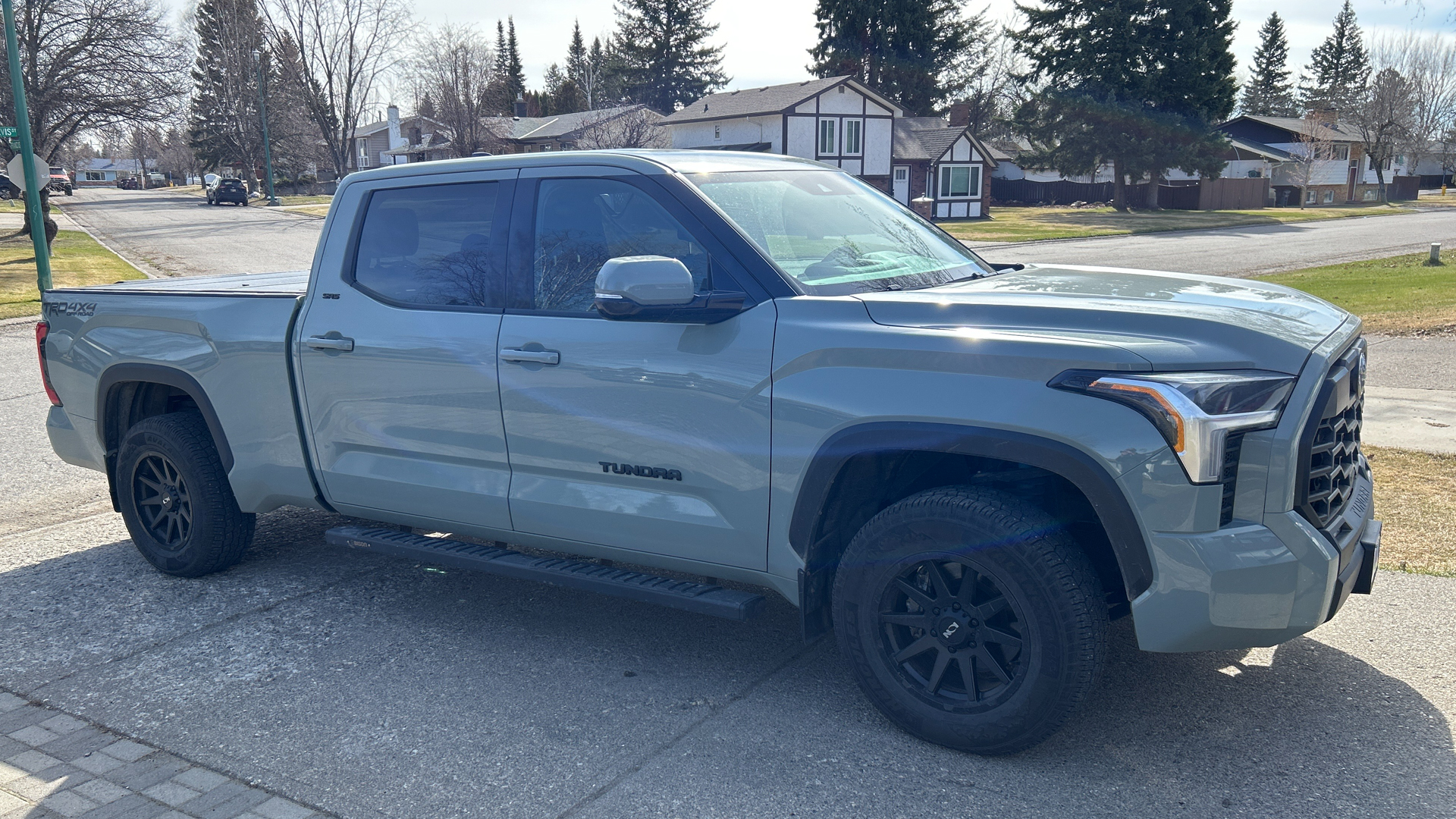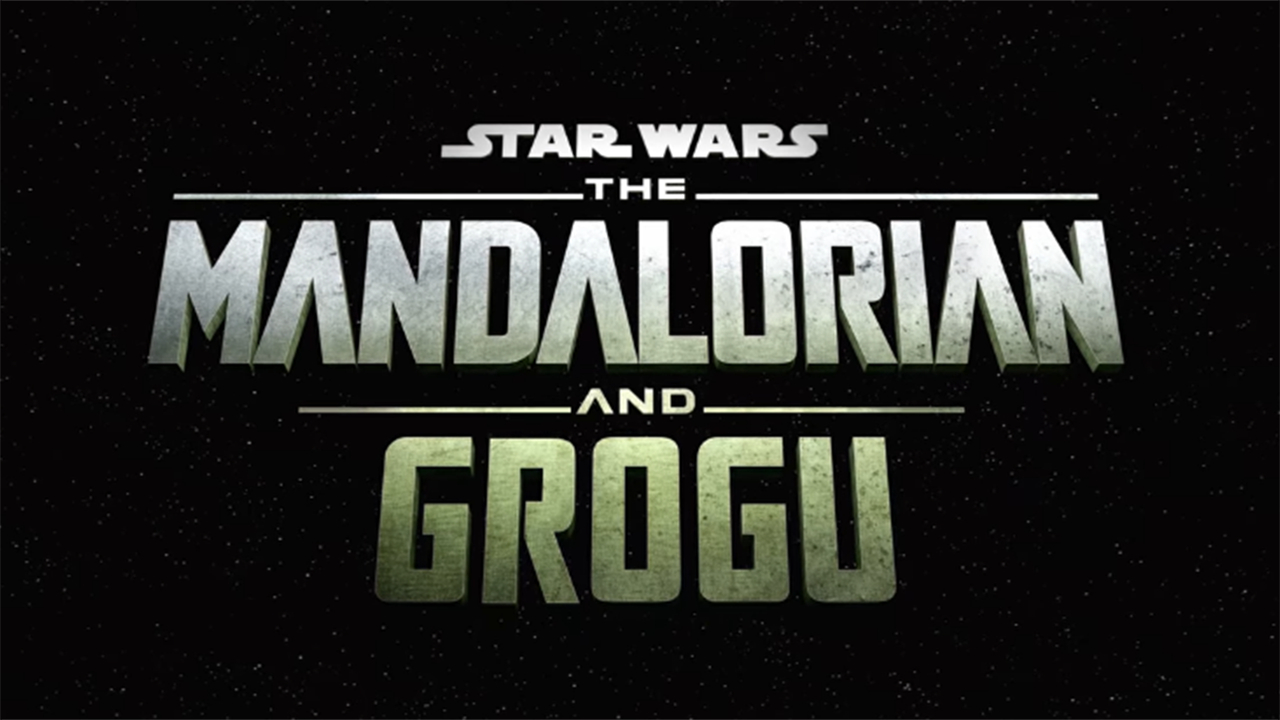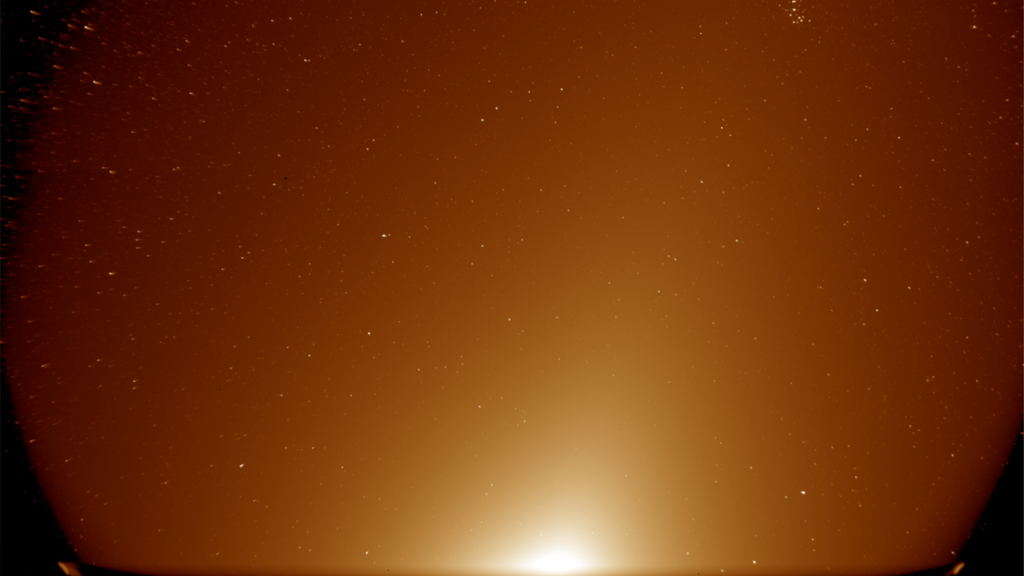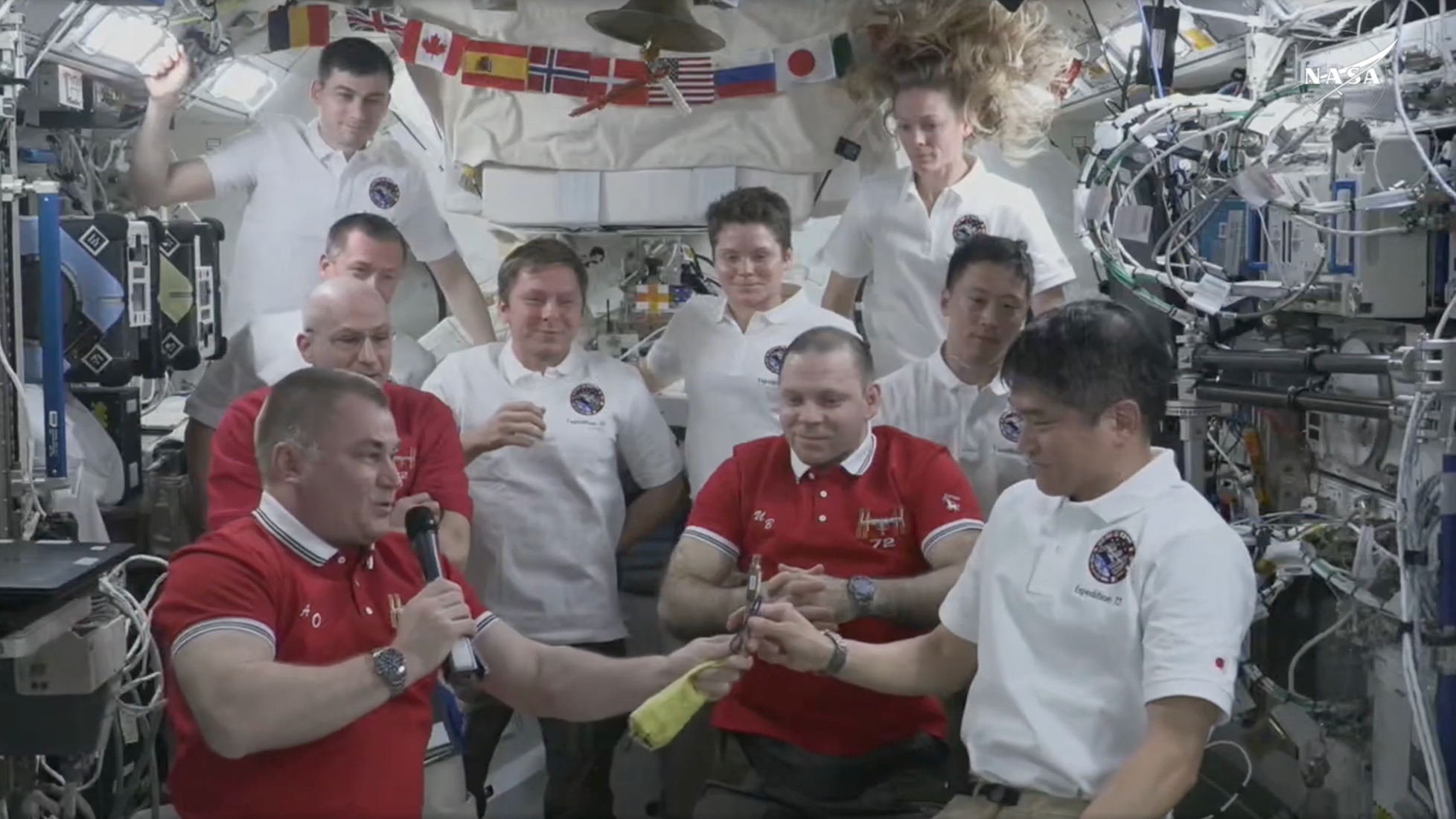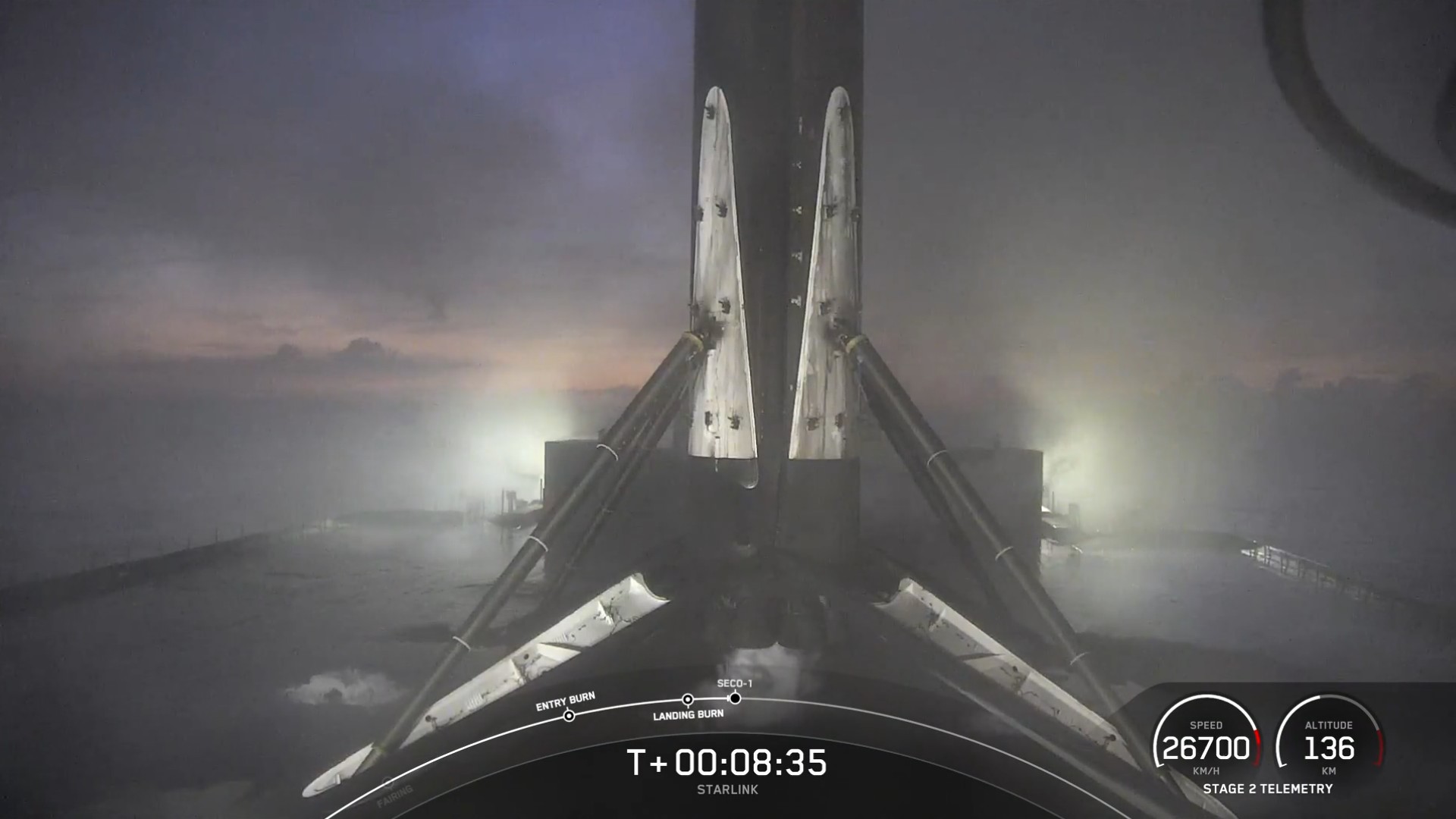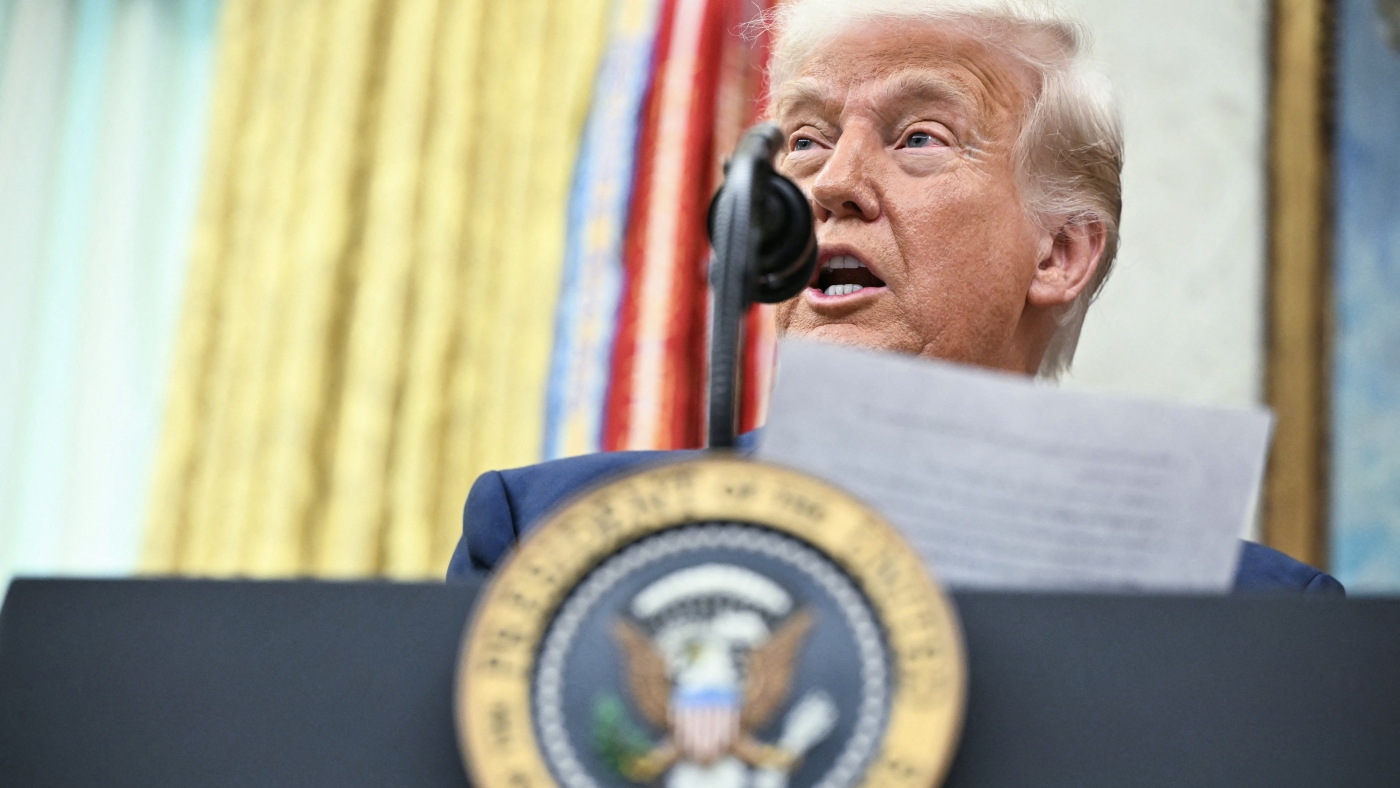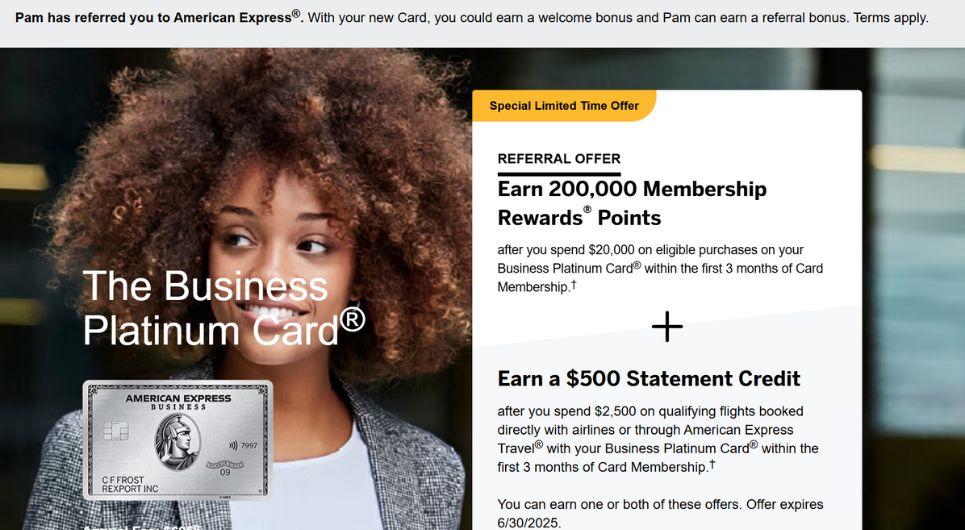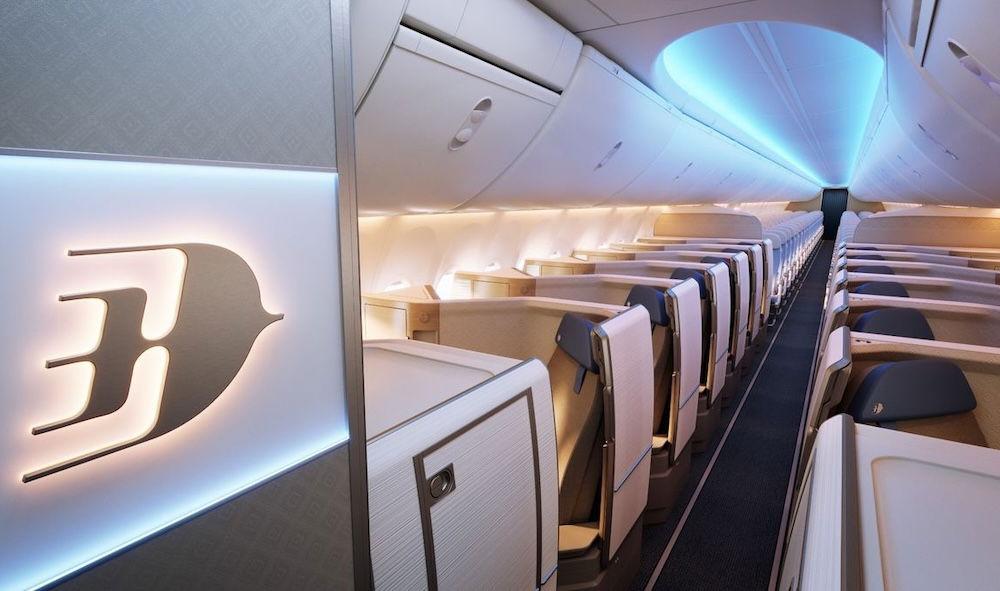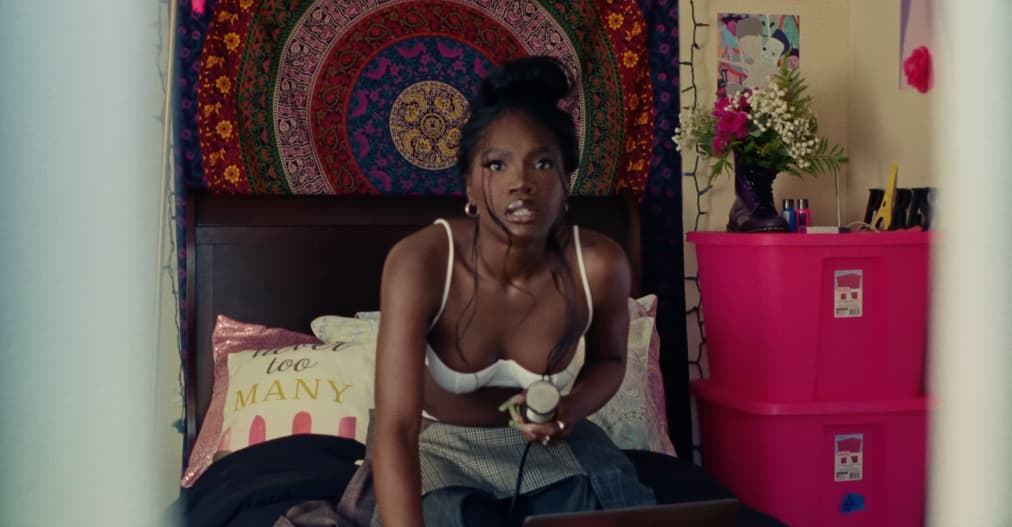Shabang Music Festival Is Like the Cheap, Early Years of Coachella
Festivals are about human and mental connections through music.
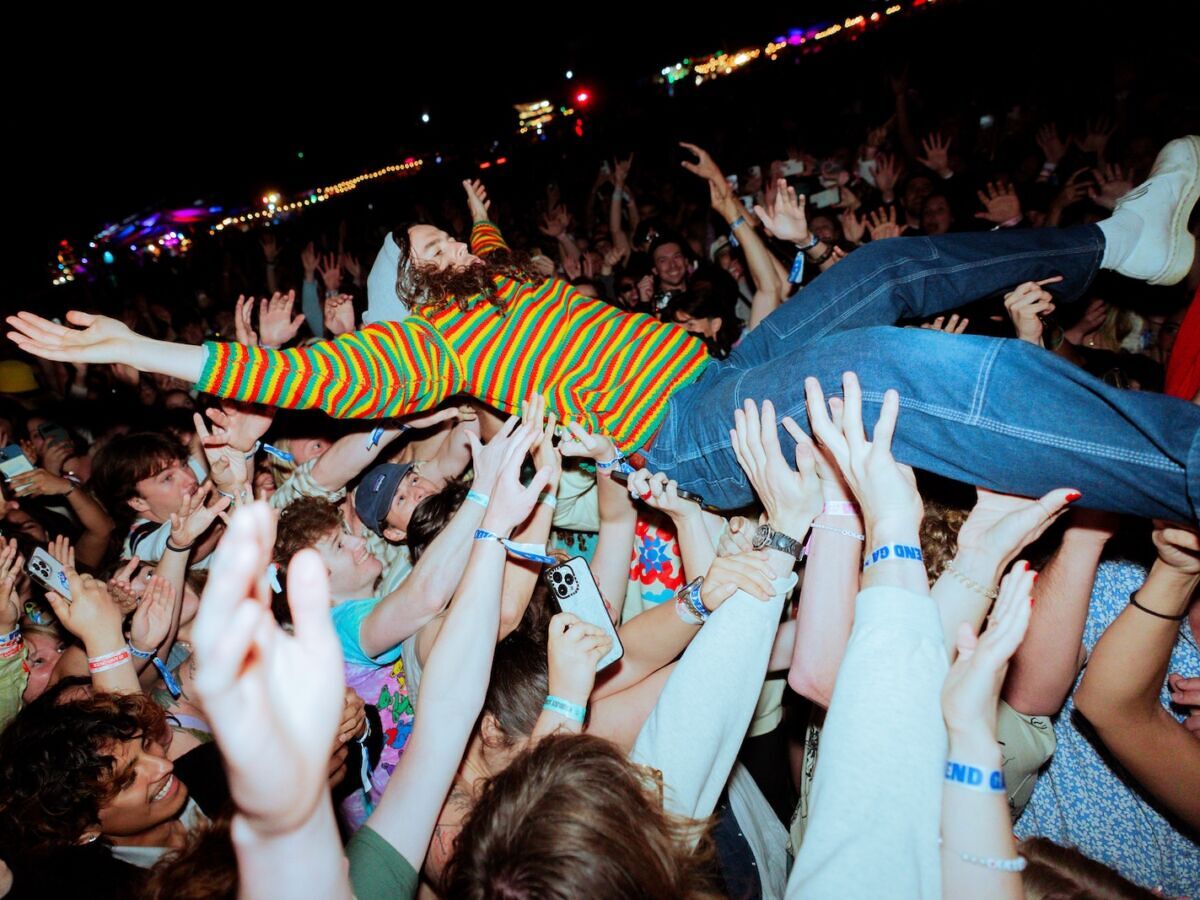
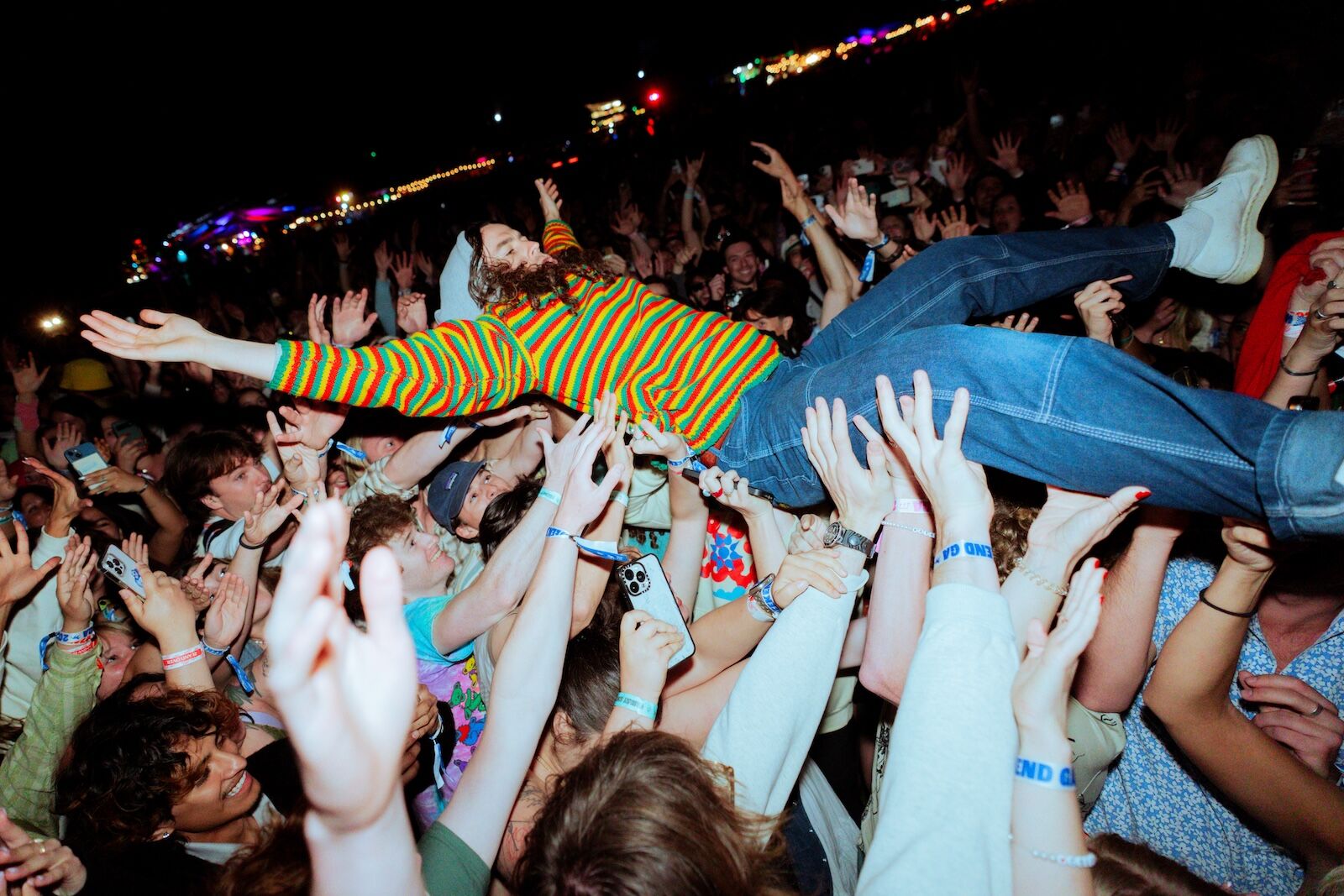
In San Luis Obispo, California, an independent music festival is expanding year after year after year. Ask music aficionados in the area, and they’ll tell you it’s quickly taking over the regional entertainment scene.
But with rapid expansion comes growing pains, and the founders of Shabang, the Central Coast’s biggest and fastest-growing music festival, have faced plenty of challenges while hosting the massive gathering in a quaint, somewhat isolated college town. It’s perhaps similar to what Coachella itself may have faced in the Coachella Valley desert, during its days of setting festival trends in the late 1990s.
Shabang was started for fun, not profit
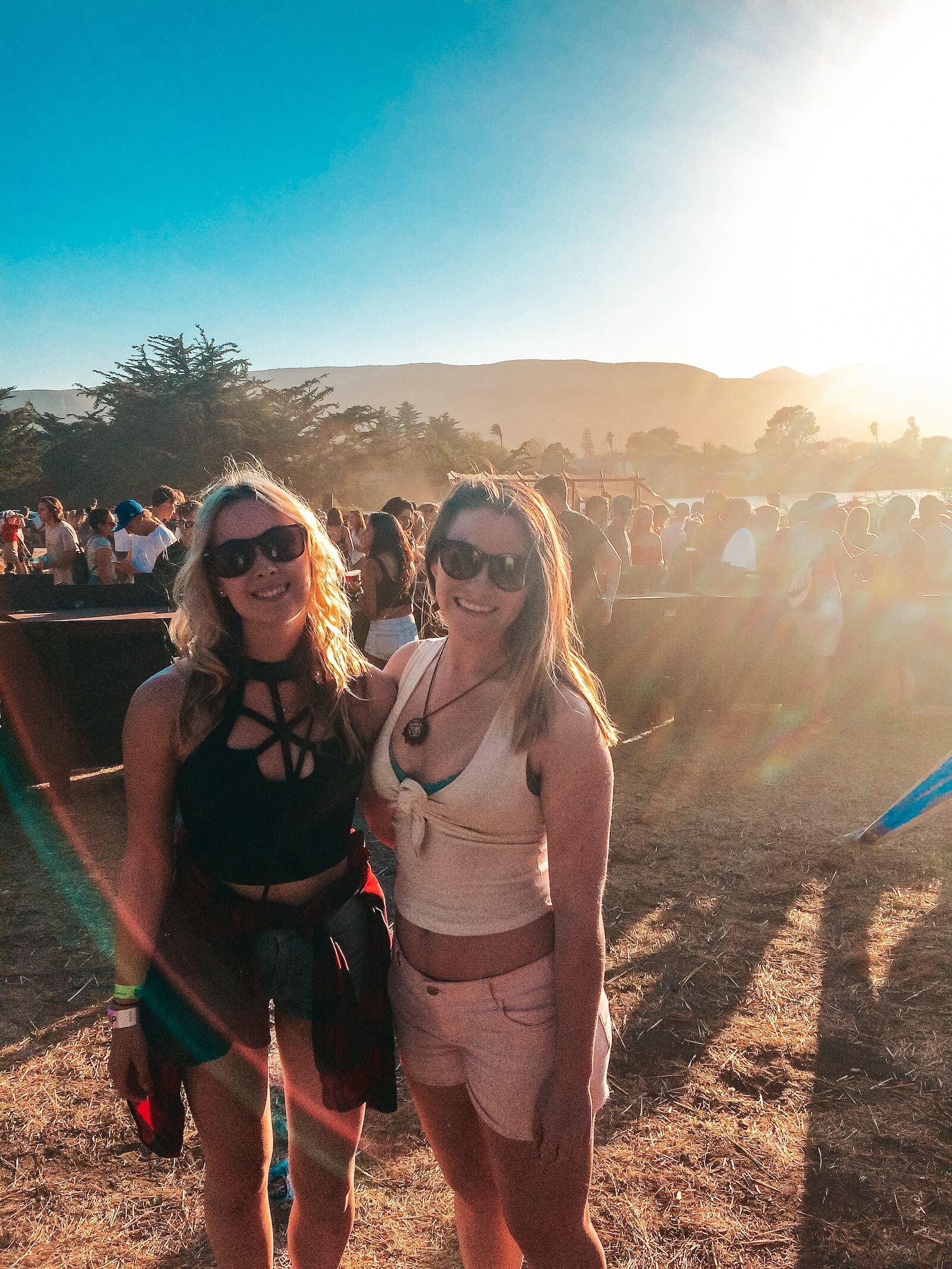
The author at Shabang in 2017. Photo: Molly O’Brien
Shabang began in 2014 as a small gathering of about two dozen friends on Cuesta Ridge, a mountain just north of San Luis Obispo in Los Padres National Forest. Within a few years, it outgrew that venue and moved to a local lakeside park. This is where it was when I attended while in college at California Polytechnic State University San Luis Obispo, about a decade ago.
Back then, my friends and I looked forward to this fun, intimate music festival. It happened every spring and served as our signal that summer was coming — and, with it, a sense of freedom and sunshine.
A shuttle ran from a stop near campus for a rate of around $10 to corral us students back and forth, and it was always an afternoon of sunny, spring vibes. We’d dress up in our festival clothes and cheer on whatever musicians were taking the stage. Often, it was a Cal Poly band made up of students like us. It felt pure.
Today, what I remember as a quaint music festival has continued to grow, transforming into a massive, multi-day event at an even larger venue.
Comparing Shabang Music Festival to Coachella
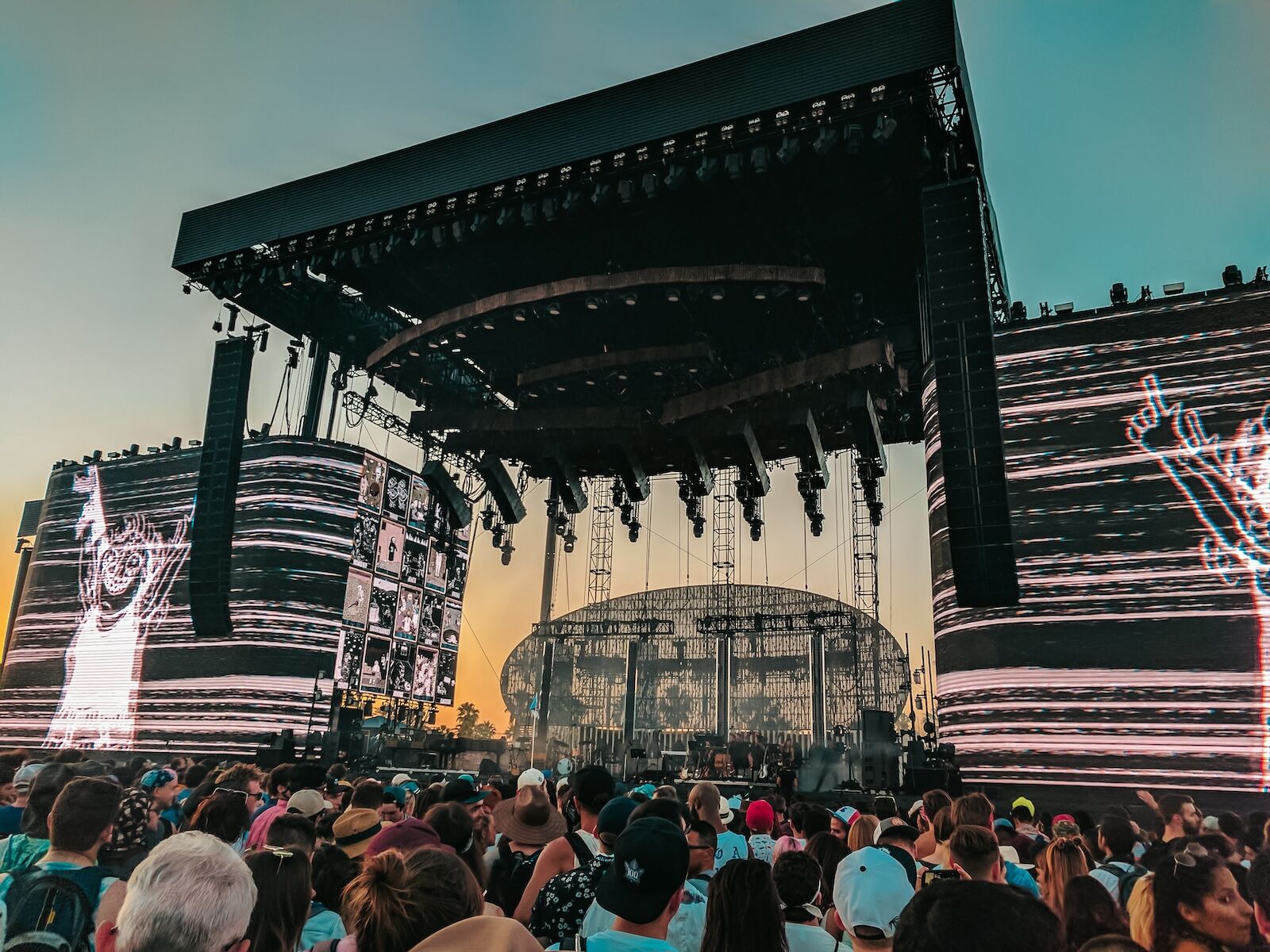
Coachella circa 2016 or 2017. Photo: Suzie Dundas
Coachella wasn’t always the enormous cultural movement it is today. It was inspired by an anti-establishment movement against hefty ticket prices and venues controlled by large corporate entities — and, supposedly, founded by promoters seeking a cool new place to host a show for folks who just wanted to listen to music. Coachella’s first strums are said to trace back to a 1993 Pearl Jam concert for 25,000 fans at the Empire Polo Club.
This show proved the venue worthy of hosting such large-scale events, and the inaugural Coachella Festival was hosted in October 1999, just three months after the disaster of “Woodstock ’99.” That poorly received festival motivated Coachella organizers to offer attendees a safe, comfortable festival experience amid the fallout. According to a 1999 story in Rolling Stone, tickets to the first Coachella sold for $50 for each day, with roughly 37,000 tickets sold between Saturday and Sunday.
One difference between Shabang and Coachella is that while Coachella was considered “alternative” and against traditional music festival culture for the time, it was never exactly poorly funded. Coachella was co-founded by two well-known entertainment industry executives and organized by Goldenvoice, a highly successful Los Angeles-based concert production company and music festival promoter.
But like Shabang today, Coachella claimed to be on a quest for uniqueness and celebration of alternative artistry. According to interviews from the time, promoters intentionally aimed for a diverse lineup, booking performers based on talent as opposed to preexisting fame. This made it unique in the festival scene of the time, and Coachella hosted rock musicians such as Beck, Tool, Rage Against the Machine, and Morrissey during its inaugural year.
The festival’s popularity proved successful enough, and in 2001, the event shifted to April to avoid the Greater Palm Springs region’s 100-plus-degree early autumn temperatures. It expanded again by adding a third day in 2007, and a second weekend in 2012. 2003 was the first year it allowed camping on the festival grounds, and in 2004, with Radiohead and The Cure as headliners, the festival officially sold out for the first time, cementing its status as a world-class cultural event.

Today, Coachella is known across the world for its fashion and celebrity attendees, almost more than its music. Photo: Tim Remer/Shutterstock
I remember stepping out of work with my computer for my 15-minute break in 2017, timed to mirror when Coachella tickets went on sale, I sat in the online waiting room for much longer than 15 minutes (sorry, Cal Poly coffee shop), and was elated when I finally scored two of those coveted tickets for weekend one.
Around the same time, in San Luis Obispo, Shabang was transitioning to its new, larger venue, becoming a more significant part of the student and local experience each spring. But there was no need for a waiting room to get tickets – nor is there now.
In 2025, Shabang Music Festival will take place over two days on May 2 and 3 at San Luis Obispo’s Dairy Creek Golf Course. The lineup includes big-name artists like Goth Babe and Wallows, and has options for camping, similar to Coachella. Prices have gone up, starting at $269 for two-day general admission tickets. Single-day tickets go for $169.
It’s a leap in cost. “Not quite Coachella prices, but still pretty steep for a small festival in the middle of nowhere,” is what I thought to myself when I first saw this year’s announcement.
As someone wearing the rose-eyed glasses of nostalgia while thinking back about my own time as a Cal Poly student, paying what now feels like pennies for a Shabang ticket, I’ll admit I was anxious about the event’s rapid changes. So I decided to learn more about the shift.
Shabang brings money to the community, but not like Coachella does
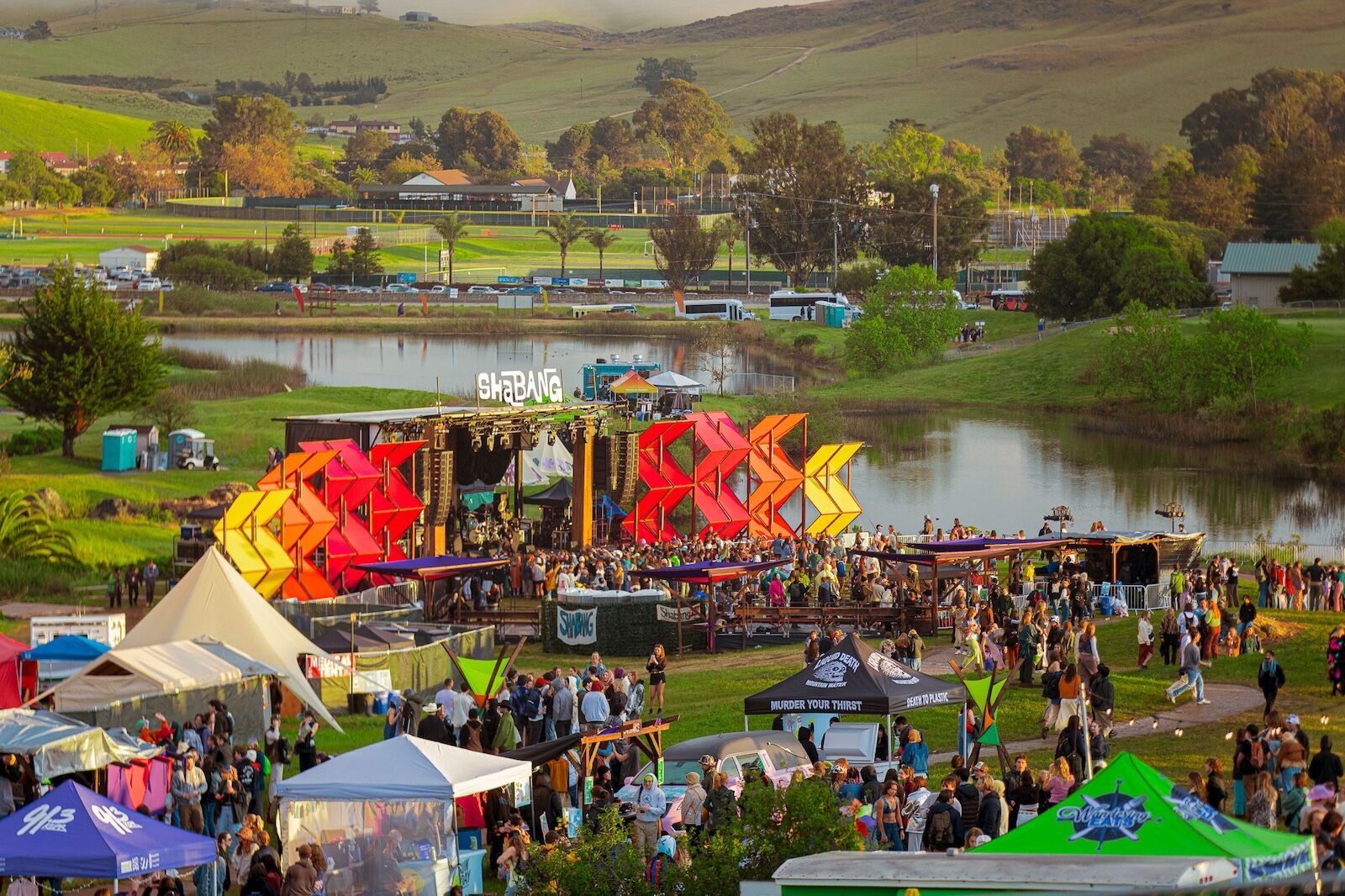
Shabang is bigger than it was, but still much smaller than Coachella. Photo: Shabang
I spoke with one of Shabang’s co-founders and current marketing director, Greg Golf. Surprisingly, he told me the festival doesn’t actually make a profit. Operational costs are higher than the profitability, making it what he calls a “labor of love.”
It’s challenging to produce, he says, as the audience primarily skews under 25 — an age group without large, expendable incomes. Further, San Luis Obispo itself isn’t easy to reach. The airport has only five gates, and it’s a three-hour drive from both Los Angeles or San Francisco. That’s less of an issue for Coachella, which is just under two hours from Los Angeles and is served by the much larger Palm Springs International Airport.
“We never set out to do this. This was never our goal,” says Golf on the festival’s rapid growth and widespread success. “We really just wanted to put on an event that highlighted the Central Coast music scene and the beauty of what we have in San Luis Obispo.” He anticipates roughly 12,000 attendees at 2025’s festival. It’s a fraction of Coachella’s 125,000 people per day, but still a lot to manage.
But Golf and his team don’t let the size go to their heads. One detail that keeps them down to earth, he says, is their commitment to staying as sustainable as possible. His team constructs the entire festival by hand using recycled wood over 12 days.
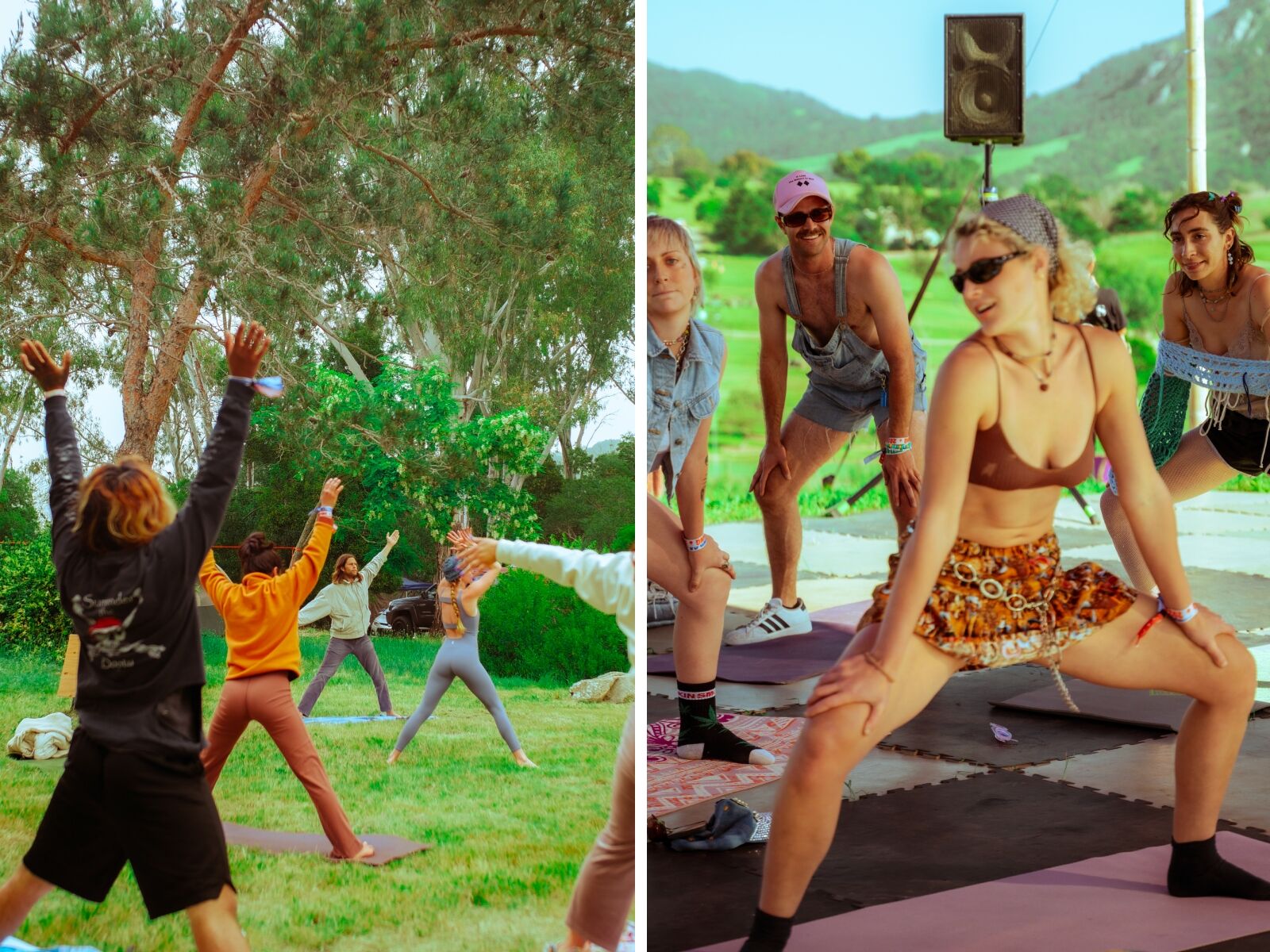
Yoga and movement classes are part of the Shabang lineup and open to all attendees. Photo: Shabang
This year, 60 Shabang artists will take over four stages, with more than 50 food, beverage, and merchandise vendors on site. The event will also have a lineup of experiential art installations, yoga and movement classes, jam sessions, music lessons, and more. Golf says he hopes the event will create an experience he and his co-founders, who arrange the festival in their free time, never imagined possible at their first Shabang more than a decade ago.
Their labor of love might not make any money for their own pockets, but it certainly drives dollars into the local economy of the 50,000-person college town. But despite the heavy cash flow into the hotels, restaurants, and stores of San Luis Obispo, the town’s locals have mixed feelings about the festival’s growth and presence in their city.
“We’ve just got to be nice and respectful and work together,” Golf says on the occasional SLOcal resident’s distaste. “It’s good for the town and the economy.”
For example, he says short-term rental prices in town go up hundreds of dollars a night when they announce Shabang’s lineup.
Regardless of public sentiment, Visit SLO CAL, the region’s destination marketing organization, is a proud sponsor of the event, proving it has significant support from a local tourism industry’s perspective.
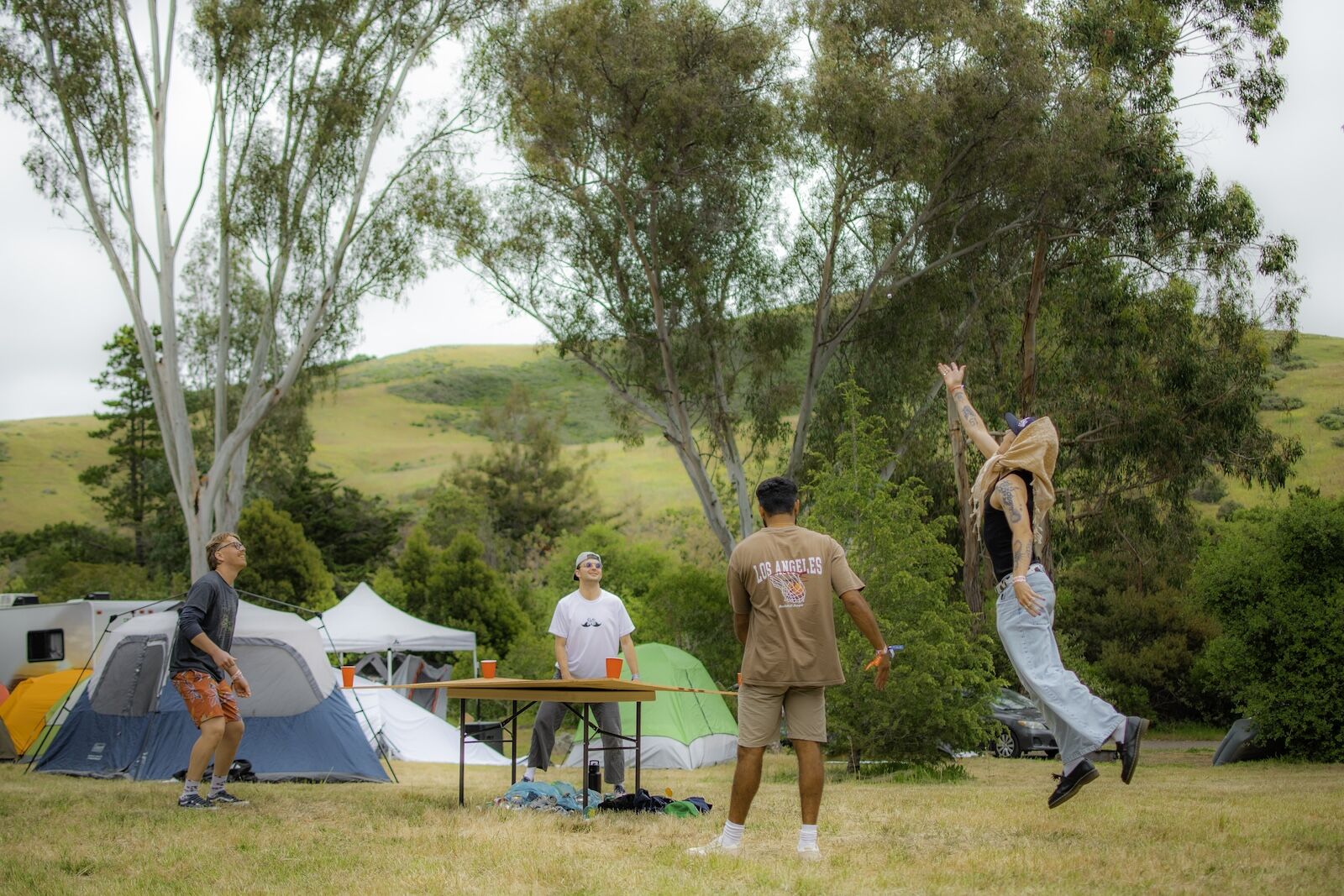
Many of Shabang’s campers buy food and supplies in San Luis Obispo, providing a boost to the local economy. Photo: Shabang
Shelby Pinckard, a spokesperson for Shabang, shared that the festival brings more than $1 million to the region’s tourism industry annually. Local businesses, including restaurants, grocery stores, and hotels, she says, are experienced with the festival and well-prepared for the influx of visitors.
Over in Coachella land, I reached out to Visit Greater Palm Springs about their take on Coachella’s visitors, as well as how it works to educate travelers on education and responsible visitation. Coachella is estimated to bring in about $700 million dollars per year into the Greater Palm Springs economy.
A representative from the Visit Greater Palm Springs organization confirmed the region needs the festival and supports the event, and wants to ensure their travelers feel welcome — while encouraging out-of-towners to be respectful visitors. Coachella shows that even if towns aren’t initially thrilled with the success of such tourist-driven events, they can provide vital support for some local economies.
What’s the future of the music festival industry in California?

Photo: Shabang
As a former and current attendee, I’m eager to see how much bigger Shabang can get while still staying true to its roots. Fortunately, the team says it’s doing everything it can to maintain the festival’s integrity.
So, what’s the difference between Coachella and an up-and-coming grassroots music festival like Shabang? From my research and conversations with Shabang organizers, it seems like a key difference are the long-term goals. Golf and his team seek growth and return on investments, sure. But above all, they want it to stay unique and specialized in the existing music festival landscape. This is a sentiment shared by other midsized festivals in the state, such as Same Same But Different near San Diego, and the High Sierra Music Festival closer to Lake Tahoe.
In speaking with Golf, it’s clear he wants to preserve the community atmosphere of that original 20-person festival a decade ago through methods like hiring people who understand and respect the town’s unique needs, and who are invested in preserving Shabang’s special feeling.
After my conversation with Golf, my take on the continuous expansion of Shabang is that it won’t ever become the next Coachella. Golf agreed it’s niche, especially with an audience that skews younger, and a location harder to reach than Palm Springs. That’s part of the reason he feels confident it’ll never become an Instagram sensation that draws inspired celebrity influencers – an element that led to Coachella’s popularity and success over the last two decades.
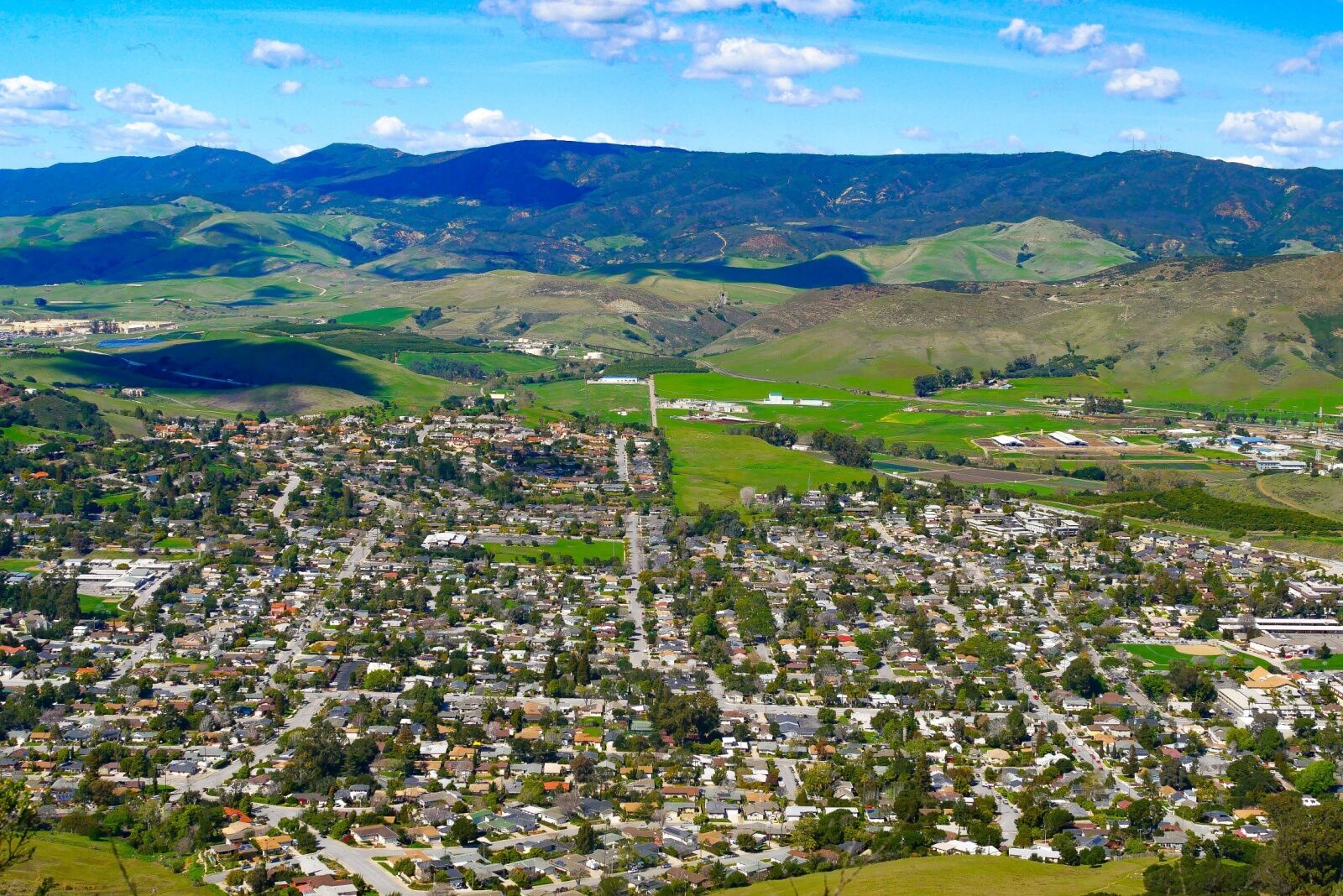
Though both towns have roughly the same population, San Luis Obispo doesn’t have the infrastructure to support major-scale ongoing tourism like Palm Springs (near Coachella) does. Photo: joojoob27/Shutterstock
As someone familiar with SLO’s small-town size and infrastructure, I worry that San Luis Obispo could never support the 200,000-plus attendees of Coachella, were Shabang to ever reach that scale. Even a small extra influx of people in San Luis Obispo can cause everything from traffic backups to lines at restaurants to spikes in the price of goods and services.
But Golf told me the team is well aware of that risk, and plans to keep the festival contained enough to keep the same small, personalized experience it had in its earliest years. This way, when people meet each other, they can connect on a more genuine level, he says.
“Coachella is the festival that you go to to be seen, to show people you are there, and also to see the biggest artists in the world,” says Golf. “[At Shabang,] you’re not going to a festival with 180,000 people… you will meet people and stay connected with people.”

Photo: Shabang
And as most avid festival-goers know, that’s a huge part of what music events are about: Human connections, inner connections, physical, mental, and spiritual connections through music. IN many ways, Coachella feels like the opposite, with celebrity fashion and the who’s-who of attendees nabbing bigger headlines than the music itself.
Compared to Coachella, Shabang is still a sleepy festival in the mountains. But for attendees who care more about the feeling of the music than the fashion and fame, festivals like Shabang may be the future of concert travel. ![]()
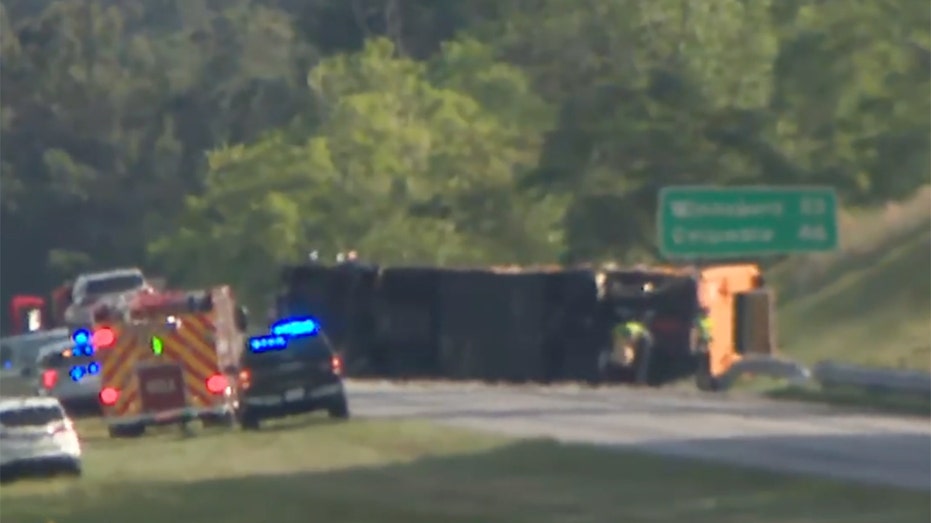

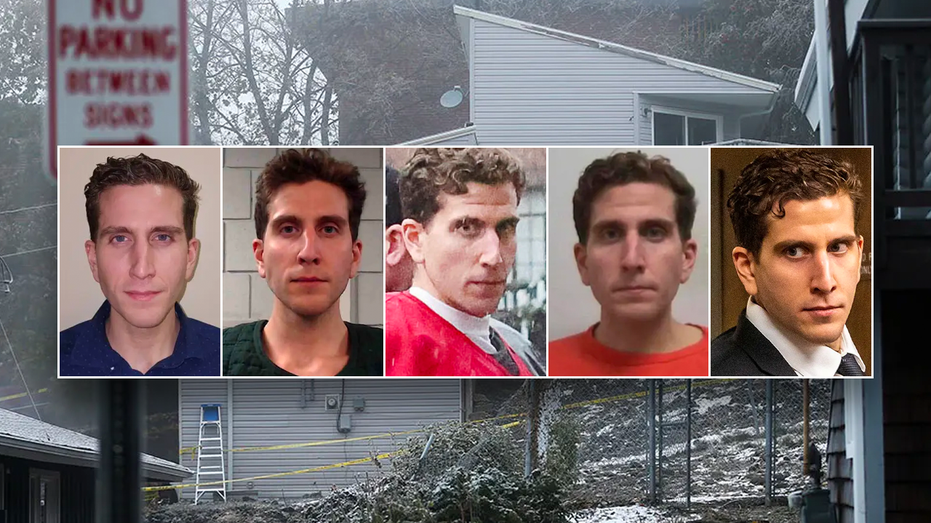

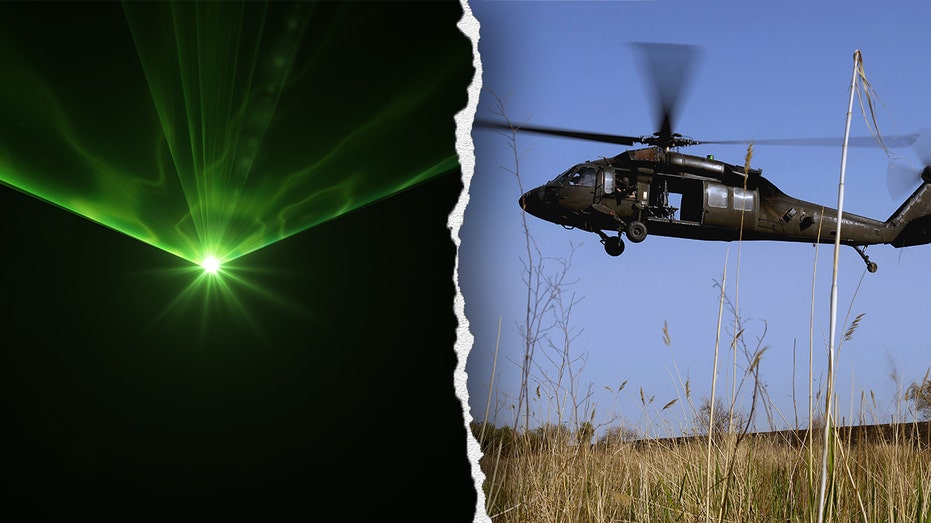






![How to Work With HAR Files: A Step-by-Step Guide [With Examples]](https://media2.dev.to/dynamic/image/width=800%2Cheight=%2Cfit=scale-down%2Cgravity=auto%2Cformat=auto/https%3A%2F%2Fdev-to-uploads.s3.amazonaws.com%2Fuploads%2Farticles%2F5wovh8gozs51ofbg0nks.png)






_Andreas_Prott_Alamy.jpg?width=1280&auto=webp&quality=80&disable=upscale#)





